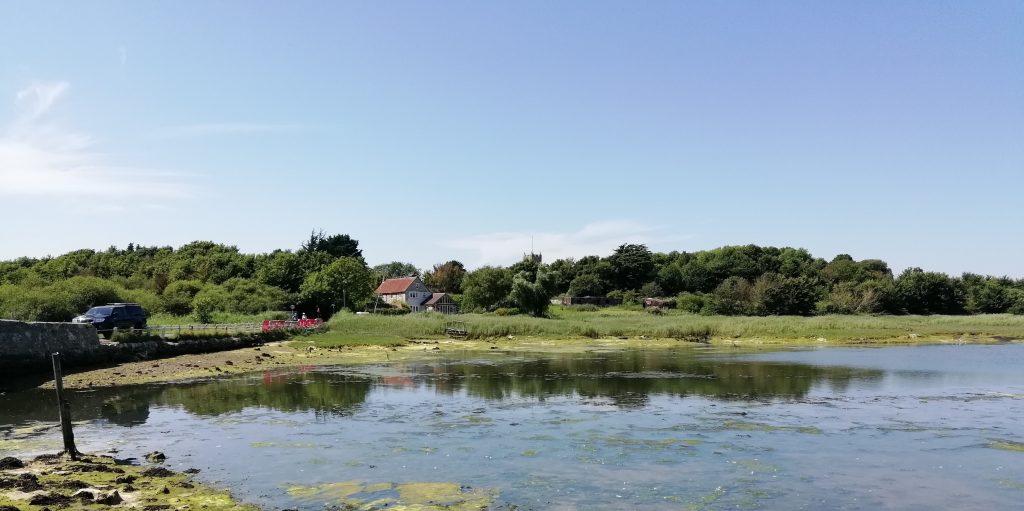Alice’s coast-to-coast walk on the Isle of Wight
Enjoy a good walk? Then why not help to review a national walking network!
If you have not already come across the ‘SlowWays’ community initiative – https://beta.slowways.org/
The initiative is designed to create a network of off-road walking routes connecting the UK’s cities, towns and villages. A total of 7,000 Slow Ways covering over 115,000km have been mapped during the first lockdown in 2020 by volunteers.
The challenge this year (2021) is to ask anyone to walk, review and verify as many of the routes as possible.
Either browse the map or choose a route using the search box – download the map, enjoy the walk and add your review. Although not included on the Slow Ways map, and now we have more freedom to roam and staycations in vogue I would like to share my recent “make-it-up-as-you-go” coast-to-coast walk on the Isle of Wight that included a short section of SlowWay YarVen Two (Yarmouth to Ventnor).
The destination

Arriving by ferry from Lymington the walk crosses to the other side of the island on foot to reach the viewpoint on Compton Down overlooking Freshwater Bay with spectacular views over the island and white cliffs stretching towards The Needles.
A six-and-half mile walk – taken very slow
It is based on a reverse of the River Yar circular walk, a published route of 4 miles that crosses the swing bridge heading west out of Yarmouth (A3054). Turning left onto Gas Works Lane towards the boatyard it turns right through Saltern Wood ancient woodland and farmland past Kings Manor Farm (an attractive Grade II listed property) along a stone track to arrive at All Saints Church (Grade II*) at Freshwater (look out for the interesting story carved into the church wall and an astonishing 32 listed monuments in the churchyard) plus The Red Lion pub. From here follow the lane along ‘The Causeway’ past the Pillbox to re-cross the Western Yar along a stonewalled causeway. Lots of wading and marshland birds occasionally disturbed by kayaks lazily floating upriver on the incoming tide.
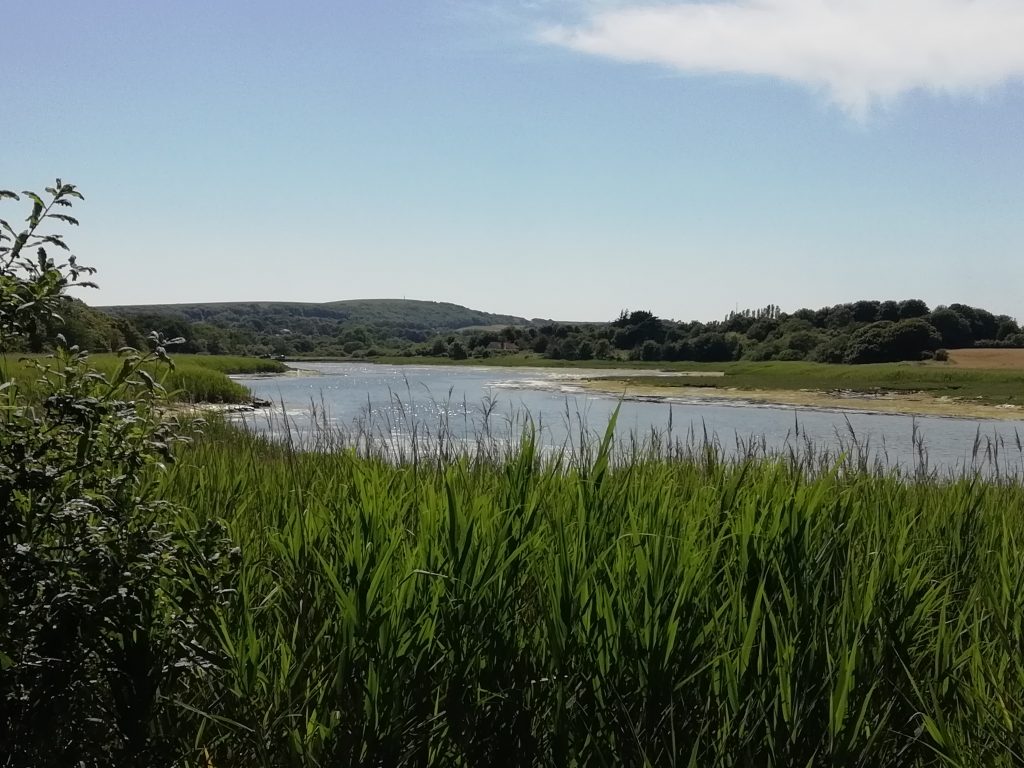
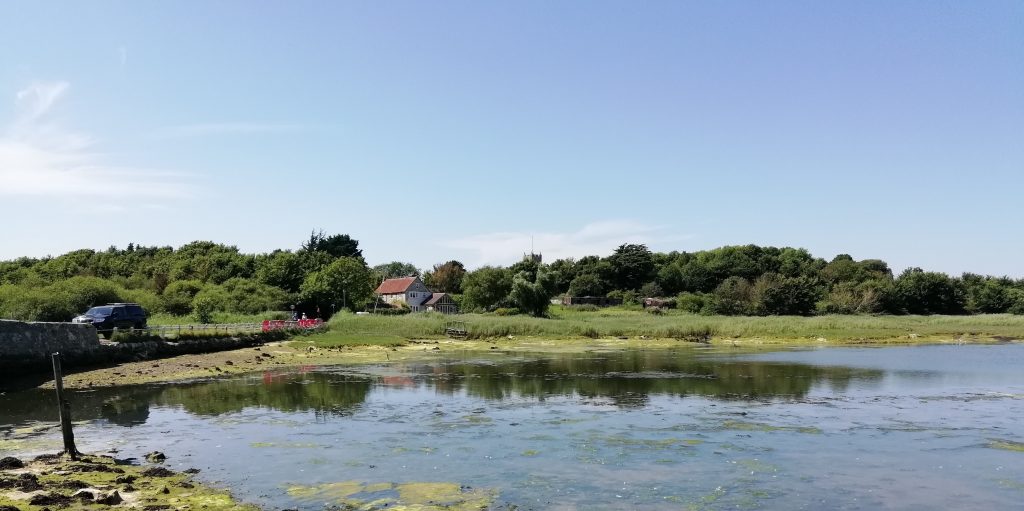
From here I decided to create my own route and adventure by leaving the published walk and continue along The Causeway into Afton. Turn left and cross the busy Newport Road (B3399) to join the track and continue south on the path past paddocks to reach the foot of Compton and Afton Down covered by Freshwater Bay Golf course (I’ve no idea how the players can concentrate on putting given the views and the high chance of losing the ball down the hill).
The walk passes through the golf course (watch out for the zippy golf buggies) and climb up the hill past the sunken water reservoir to reach the highpoint. From here the 360-degree view is quite spectacular with the bay, different coloured cliffs and a large stretch of the island, Yarmouth, the Solent, New Forest and Portsdown Hill in the far distance. An arresting view that adds to the Isle of Wight’s Area of Outstanding Natural Beauty (AONB) status. The surrounding area also contains 4 scheduled monuments, all part of a long barrow and bowl barrow cemetery on Afton Down.
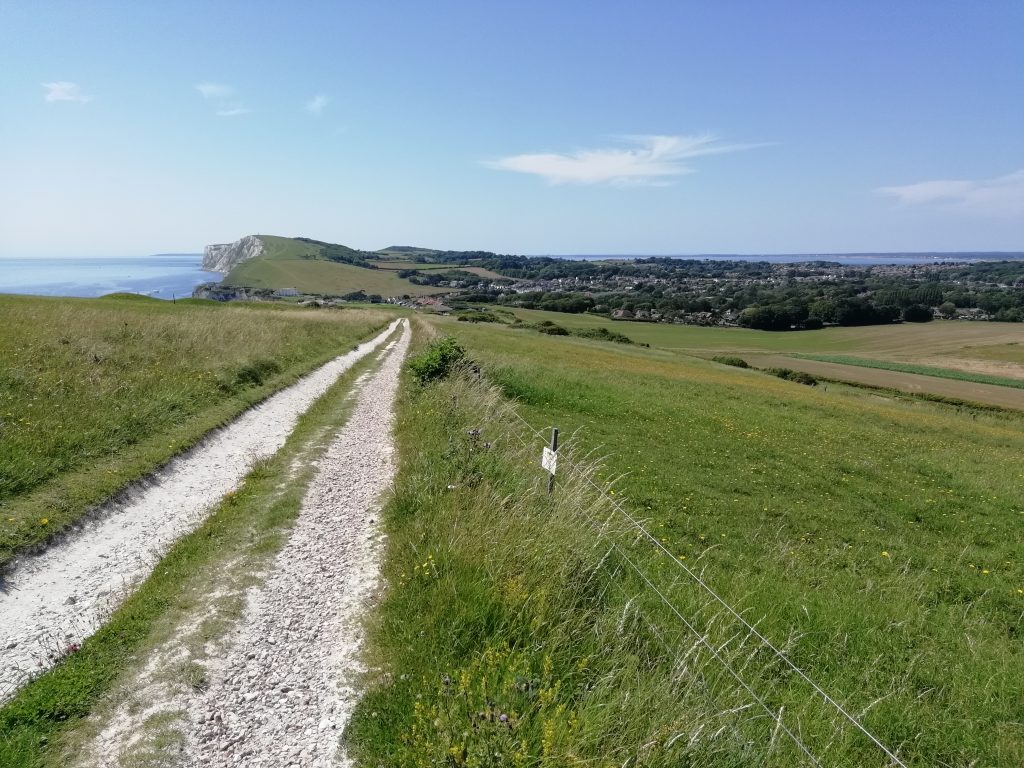

Taking the same route back down (to avoid more climbing on one of July’s hottest days of the year!) the shade of the trees was a welcome respite before reaching the causeway bridge – an extra 2.5 miles added before returning to Yarmouth along the flat disused railway track. The route is well-used by cyclists, mothers with prams and walkers running alongside the River Yar, with the last section part of the Yarven SlowWay.
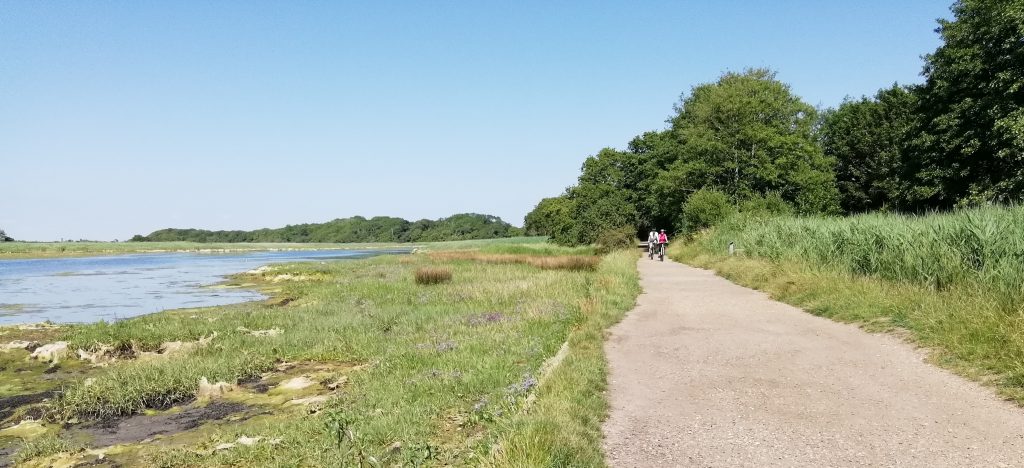
And what could be better after a long walk? A welcome tea and cake stop awaits at the Off the Rails railway café, or if closed the Gossips Café by the Pier with its local speciality – Isle of Wight crab sandwich, cup of tea with warm scone, jam and clotted cream.
Go on try the walk, I doubt you will not be disappointed!
Further information:
https://www.offtherailsyarmouth.co.uk/river-yar-circular-walk
https://www.iwhistory.org.uk/HER/0805pillboxes.htm and https://www.islandeye.co.uk/history/air-battles-military/freshwater-causeway-pillbox.html
https://www.wildonwight.co.uk/habitats/woodland.php
Saltern Wood is a good example of Ancient Woodland – defined as dating to 1600AD or before and is an irreplaceable resource.
